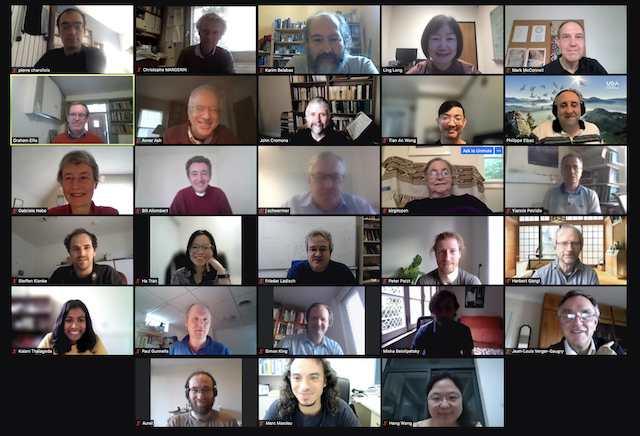Lattices and Cohomology of Arithmetic Groups: Geometric and Computational Viewpoints (Online) (21w5205)
Organizers
Paul Gunnells (University of Massachusetts)
Philippe Elbaz-Vincent (Université Grenoble Alpes)
Graham Ellis (National University of Ireland)
Description
The Banff International Research Station will host the "Lattices and Cohomology of Arithmetic Groups: Geometric and Computational Viewpoints" workshop in Banff from October 3 to October 8, 2021.
A lattice is a discrete collection of regularly ordered points in space. Lattices are everywhere around us, from the patterned stacked arrangements of fruits and vegetables at the grocery to the regular networks of atoms in crystalline compounds. Today lattices find applications throughout mathematics and the sciences, applications ranging from chemistry to cryptography and Wi-Fi networks.
The focus of this meeting is the connections between lattices and number theory and geometry. Number theory, one of the oldest branches of pure mathematics, is devoted to the study properties of the integers and more sophisticated number systems. Lattices and number theory have many deep connections. For instance using number theory it was recently demonstrated that certain packings of balls in high dimensions are optimally efficient. Lattices also appear naturally when one studies certain spaces that play an important role in number theory; one of the main focuses of this meeting is to investigate computational and theoretical methods to understand such spaces and to expand the frontier of our algorithmic knowledge in working with them.
The Banff International Research Station for Mathematical Innovation and Discovery (BIRS) is a collaborative Canada-US-Mexico venture that provides an environment for creative interaction as well as the exchange of ideas, knowledge, and methods within the Mathematical Sciences, with related disciplines and with industry. The research station is located at The Banff Centre in Alberta and is supported by Canada's Natural Science and Engineering Research Council (NSERC), the U.S. National Science Foundation (NSF), Alberta's Advanced Education and Technology, and Mexico's Consejo Nacional de Ciencia y Tecnología (CONACYT).






